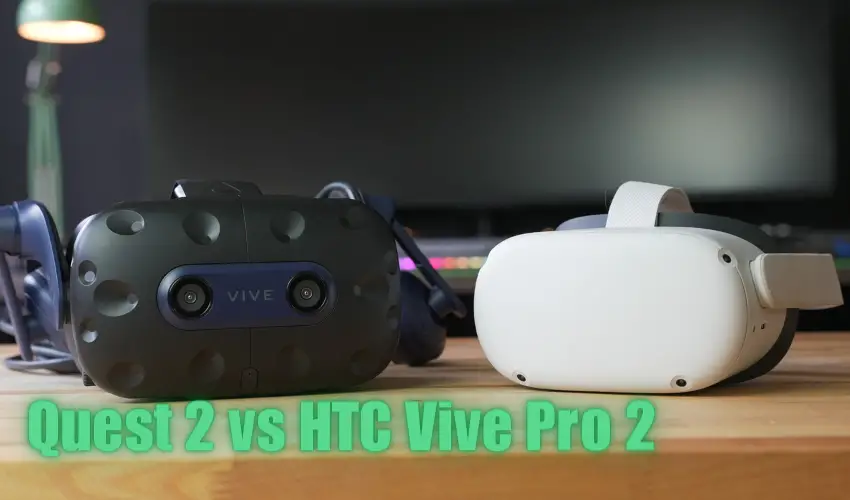
The competition for the finest VR headset has never been fiercer, and today we’re looking at the top two VR headsets available: the Oculus Quest 2 and the HTC Vive Pro 2.
Meta Quest 2 (previously referred to as Oculus Quest 2) is commonly considered the industry standard, providing a remarkable experience at an accessible price. Conversely, the HTC Vive Pro 2 provides significantly more extensive VR features to VR users, but is the price justified?
There are some major distinctions between the two. This means that the answer is more complex if you’re trying to decide which virtual reality headset to buy. Not all virtual reality headsets are made equal; some are more suited for specific scenarios, and we’re here to assist.
It’s critical to understand exactly what you’re receiving for your money when it comes to a VR headset, so let’s begin with a comparison of the two VR headsets. Below are direct comparisons of specifications, pricing, requirements, and many more aspects.
Quest 2 Vs. HTC Vive Pro: A Quick Comparison Of Specifications
To begin, let’s look at a side-by-side comparison between the two headset specifications:
| Specifications | Meta Quest 2 | HTC Vive Pro 2 |
| HDR | No | No |
| Resolution (per-eye) | 1832×1920 | 2448×2448 |
| Refresh Rate | 72Hz/90Hz/120Hz | 120Hz |
| Panel Type | LCD panel | LCD panel |
| Tracking Type | 6DoF (Inside Out) | 6DoF (marker-based) |
| Hand Tracking | Yes | No |
| Eye Tracking | No | No |
| Finger Tracking | Yes | Yes (when used with Index controllers) |
| Field Of View | 97 degrees | 120 degrees |
| Audio | Headphone Jack | USB-C headphones |
| Mic | Yes | Yes |
| Wired/Wireless | Both | Wired |
Resolution
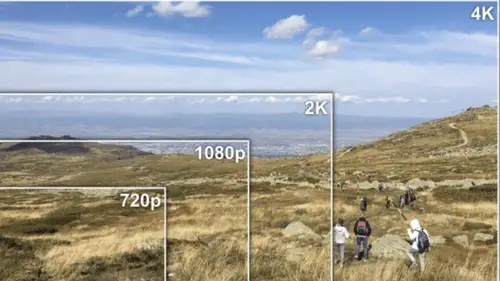
Regarding resolution and the screens available on both devices, it’s reasonable to say that the Vive Pro 2 and the Quest 2 differ slightly. For comparison, the HTC Vive Pro 2 has a total resolution of 5K, which translates to 2.5K per eye, or a resolution of 2448×2448 on an LCD. The Oculus Quest 2 has an LCD with a resolution of 1832×1920.
In brief, the greater resolution of the Vive Pro 2 allows for more detailed visuals, yet considering that both headsets employ an LCD, the colors should seem similar. Some headsets, such as the impending PSVR 2, will feature OLED screens, while others, such as the Meta Quest Pro with its rumored Mini LED displays, are expected to have a higher contrast ratio with more realistic and richer colors.
Refresh Rate
While the resolution of the screens on both headsets differs in some respects, their refresh rates are almost identical. The Vive Pro 2 normally outputs at 120Hz. In contrast, the Quest 2 originally launched with a 72 Hz refresh rate that has been upgraded to 90Hz, but 120Hz can be activated in select games, owing to a series of software upgrades.
Performance

Since the HTC Vive Pro 2 is much more demanding in terms of specifications, you’ll require a more robust VR-ready gaming PC to play games at their highest settings. We observed a performance distinction between the two headsets when testing them on F1 2022 via SteamVR, with the Meta Quest 2 giving a more steady framerate and letting us utilize higher graphical parameters than the HTC Vive Pro 2.
Although inbuilt games are confined to the Meta-owned Oculus Store, there is a good selection of games accessible if you choose not to attach your headset to your PC. Just bear in mind that they are often less powerful than games found on Steam. This is also a good time to emphasize that Meta Quest 2 can run independently.
Tracking
The HTC Vive Pro 2 employs motion tracking base stations (dubbed “lighthouses”) to transform your movements and hands (through controllers) into the game. These lighthouses operate best when set above you, at a little slant, in opposite corners of a large space.
This requires careful design and a specialized VR play area. As a renter, you might need help with this because you’ll be unable to make permanent changes to the walls of your home; however, portable stands are available.
The Meta Quest 2 doesn’t require Steam VR base stations because tracking is completely internal, making it a superior alternative if you’re looking for simplicity. This also means that you’ll have less to carry if you take the headset on a trip.
Computer Connectivity
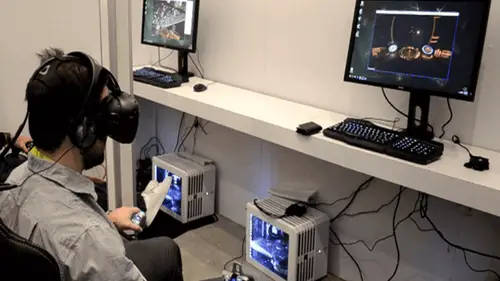
Both headsets link to a PC to maximize performance and run PC apps (unless you’re using the Meta Quest 2’s built-in operating system). The HTC Vive Pro 2 includes a connection for this purpose, which links to a Display Port on your video card (like a monitor would).
Wireless connectivity isn’t required for a VR headset, but it’s vital if you want the finest immersion possible. The Meta Quest 2 does not have a specialized streaming cable (it includes a charging wire), but it sells the extra cable. This plugs into a USB-C 3.1 port on your computer. The Meta Quest 2 includes “Air Link” connectivity, which allows you to connect to your PC through a LAN connection if your modem router is capable.
Accessibility And Functionality
It’s critical to recognize that the Meta Quest and HTC Vive Pro 2 have completely distinct goals. For Meta Quest 2, ease of access is the aim of this headset. This is because it’s a crucial element of the popular Metaverse – an invention that Meta (previously referred to as Facebook) thinks will transform society.
As a result, the Quest has been intended to appeal to as many clients as possible. Indeed, Meta has removed the contentious need to check in to Meta Quest 2 using a FB account as of next month.
With accessibility to the Steam VR and VIVEPORT shops, the HTC Vive Pro 2 is built for a professional gaming experience. Many VR players still prefer the Quest, which has many games and applications accessible on the Quest Store. This means that titles like Half-Life: Alyx and Skyrim VR are easily accessible.
You can use the Meta Quest 2 to browse the Steam VR Store and its high-powered titles, but you’ll have to connect it to a compatible PC like the HTC Vive Pro 2. Anyhow, the Quest 2 VR experience could be more fluid.
Headset Design
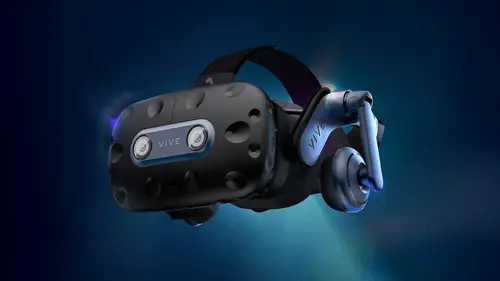
In terms of ergonomics, the Vive Pro 2 outperforms the Quest 2. The Vive Pro 2’s hard plastic strap may be adjusted via a built-in crank. On the contrary, the Quest 2 has a velcro strap that (several users have said) only sometimes provides a secure fit.
Both virtual reality headsets have headphones and microphones, with the Vive Pro 2 offering Hi-Res certification. Quest 2 offers three interpupillary distance (IPD) settings: 58 mm, 63 mm, and 68 mm, which helps adjust the distance between both optics to your liking.
Meanwhile, the Vive Pro 2 supports IPD adjustment ranging from 57 to 72mm, allowing for greater user customization. The more expensive Vive Pro 2 wins in terms of ergonomics, IPD, and acoustics.
Build Quality
The HTC Vive Pro 2 is a thicker headset than the Meta Quest 2, but it also appears more robust, with tougher plastics and a better head strap. Both headsets have built-in speakers and microphones, and you won’t be able to tell the difference between them.
Moreover, the overall design of the Vive Pro 2 and its consoles is superior to that of the Meta Quest 2. It feels a lot better and more difficult to break. And while you may also charge the Vive Pro 2 controllers through USB-C, the Meta Quest 2 controllers use AA batteries that give a longer battery life.
Controllers
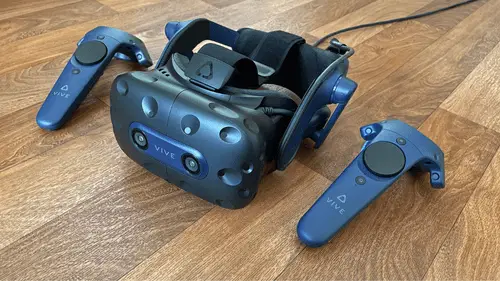
The HTC Vive Pro 2 controllers are bidirectional, with each controller suitable for being used on either hand, unlike the Meta Quest 2 controllers specifically designed for left and right hands. This is a small aspect, but it is significant to some, particularly if you are looking for a replacement.
Furthermore, touchpads are used for analog movement in the Vive Pro 2 controllers, whereas joysticks are used in the Meta Quest 2 controllers. Though most people prefer joysticks because they give better tactile feedback, the touchpads on the Vive Pro 2 controllers are pretty decent.
Setup
The setup process for both headsets is rather basic, while key components may alter due to their varied use cases. It’s as simple as installing the Vive program to your gaming PC, installing the headset, and then executing the on-screen steps to have the HTC Vive Pro 2 up and running.
Depending on how you intend to utilize the headset, things may be slightly different for Quest 2. It is, first and foremost, a freestanding gadget that you can use without a computer, and the first time you use it, you must link a Facebook account and the Oculus program on your phone.
Games
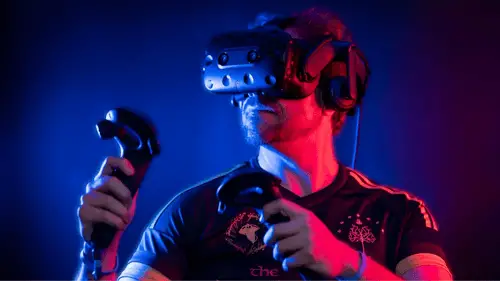
Given its dual-purpose use scenario as a connected and standalone headset, the Quest 2 probably wins on the gaming front. With its internal storage capacity, you can download the greatest Quest 2 games straight from the Oculus Store, including fan favorites like Superhot VR and Beat Saber and top VR horror titles like Blair Witch VR.
Furthermore, like the HTC Vive Pro 2, the Quest 2 can run Steam games when attached to a PC, giving you access to VR titles, like Sniper Elite VR and Half-Life: Alyx.
Because the Vive Pro 2 is only a connected PCVR headset, you’re restricted to games accessible through marketplaces like Steam. But with such a vast selection, you’re certain to find plenty to enjoy.
Quest 2 Vs. HTC Vive Pro 2: Which One Should You Go For?
Why Should You Buy Quest 2?
1. You’re Looking For A Smooth VR Experience
The Quest 2 is a standalone VR headset that is exceedingly simple to operate, making it ideal for both tech novices and seasoned techies.
2. You Have Plenty Of Room To Roam
The Quest 2 is very scalable, and you can use the Guardian location tracker to create various VR experiences ranging from sitting to wide roaming freely in the digital environment.
3. You’re On A Tight Budget
The Quest 2 offers excellent value for money. And you get great performance for a price comparable to costly VR headsets and access to a slew of Oculus Quest as well as Android-based special editions.
4. If You Own A VR-Ready Gaming Laptop
You can receive even more value for your dollars by using SteamVR to access hundreds of great VR games.
5. You’re Fine With Being Linked To Facebook
To activate the Quest 2, Oculus wants you to have a Facebook account. So, if you’re fine with it, you’re all set to get started!
Why Should You Buy the HTC Vive Pro 2?
1. You Want The Most Visually Appealing VR Experience Possible
With such a higher resolution, you can easily immerse yourself in the digital world. The HTC Vive Pro is undoubtedly the greatest in VR screen technology.
2. You Have A Lot Of Room To Play
The tracking system on the Vive Pro 2 is amazing if you have enough space to set up a lot of room. All you have to do is connect to a Steam VR base station.
3. You’ve Already Purchased Vive Hardware
Taking your previous Vive devices and ground stations with you on your journey with Vive Pro 2 may save a significant amount of money on the package price.
Quest 2 Vs HTC Vive Pro 2 – Verdict
It’s hard to argue that the Meta Quest 2 isn’t a better buy than the HTC Vive Pro 2. With a price that is more than three times less expensive than the HTC Vive Pro 2, Meta Quest 2 is equipped with internal mapping and accessibility to internal games.
The Meta Quest 2 is considerably more competent and far more mobile. It calls into question how serious your demands are if you choose a more costly option. If you’re looking for greater visuals, the Vive Pro 2 could be the best option, but consider how crucial this is for what you intend to accomplish with it.
